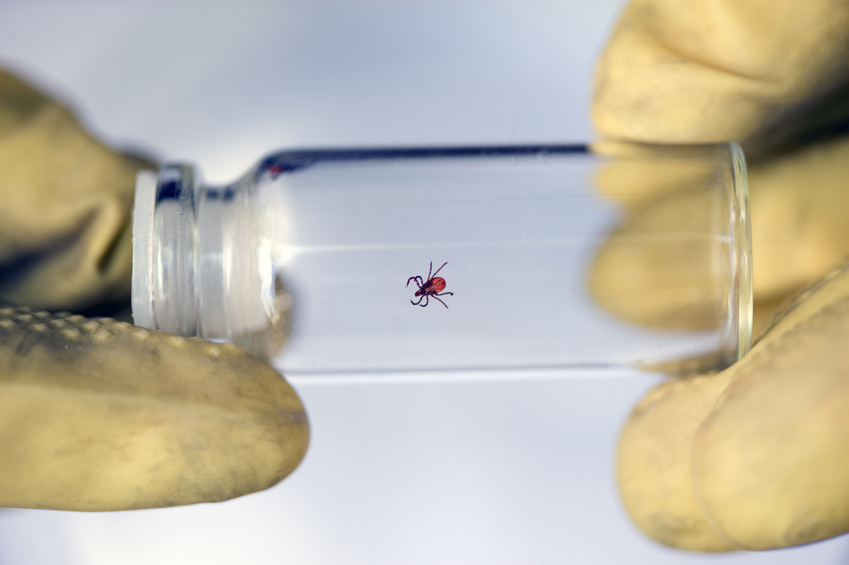Canadian Tick-borne Research 2010-Present
Please note that while summaries of the journal articles listed below are fairly universally accessible by members of the public, full text access often (though not always) requires a fee and/or account.
If you are aware of any Canadian research into ticks or tick-borne illnesses that should be included below, please send me an email and include whatever details you have.
Last updated: May 1, 2024
Found 634 results
, “Evidence-based communication on climate change and health: Testing videos, text, and maps on climate change and Lyme disease in Manitoba, Canada”, PLoS One, vol. 16, no. 6, 2021.
, “Exposure to Tick-Borne Pathogens in Cats and Dogs Infested With Ixodes scapularis in Quebec: An 8-Year Surveillance Study”, Front Vet Sci., vol. eCollection 2021, 2021.
, “The Family Borreliaceae (Spirochaetales), a Diverse Group in Two Genera of Tick-Borne Spirochetes of Mammals, Birds, and Reptiles”, J Med Entomol., vol. XX, no. X, pp. 1-12, 2021.
, “Fine-scale determinants of the spatiotemporal distribution of Ixodes scapularis in Quebec (Canada)”, Ticks Tick Borne Dis, vol. 13, no. 1, 2021.
, “First Report of Ixodes scapularis Ticks Parasitizing a North American Porcupine in Canada”, parasitologia, vol. 1, no. 2, pp. 45-49, 2021.
, “The Impact of Tick-Borne Diseases on the Bone”, Microorganisms, vol. 9, no. 3, 2021.
, “In Response to ‘Patient Lyme disease websites prioritize science; public health websites prioritize consistent messaging’”, Zoonoses Public Health, 2021.
, “Inguinal Ulceroglandular Tularemia Caused by Francisella tularensis Subspecies holarctica, Canada”, Emerging Infectious Diseases, vol. 27, no. 4, pp. 1228-1229, 2021.
, “Long-term Outcomes in Treated Lyme Carditis”, Curr Probl Cariol, 2021.
, “Long-term transmission dynamics of tick-borne diseases involving seasonal variation and co-feeding transmission”, J Biol Dyn, vol. 15, no. 1, pp. 269-286, 2021.
, “The Lyme disease spirochete can hijack the host immune system for extravasation from the microvasculature”, Mol Microbiol, 2021.
, “Lyme Disease Training and Knowledge Translation Resources Available to Canadian Healthcare Professionals: A Gray Literature Review”, J Prim Care Community Health, 2021.
, “Mechanistic movement models reveal ecological drivers of tick-borne pathogen spread”, J R Soc Interface, vol. 18, no. 181, 2021.
, “Modelling Spatiotemporal Patterns of Lyme Disease Emergence in Québec”, Int J Environ Res Public Health ., vol. 18, no. 18, 2021.
, “Monitoring Risk: Tick and Borrelia burgdorferi Public Participatory Surveillance in the Canadian Maritimes, 2012-2020”, Pathogens, vol. 10, no. 10, 2021.
, “Monitoring the patterns of submission and presence of tick-borne pathogens in Ixodes scapularis collected from humans and companion animals in Ontario, Canada (2011-2017)”, Parasit Vectors., vol. 14, no. 1, 2021.
, “More than ticking boxes: Training Lyme disease education ambassadors to meet outreach and surveillance challenges in Québec, Canada”, PLos One, vol. 16, no. 10, 2021.
, “A multi-year assessment of blacklegged tick (Ixodes scapularis) population establishment and Lyme disease risk areas in Ottawa, Canada, 2017-2019”, PLoS One, vol. 16, no. 2, 2021.
, “Neurosyphilis and Lyme neuroborreliosis”, Curr Opin Neurol, 2021.
, “Novel β-Cyclodextrin and Catnip Essential Oil Inclusion Complex and Its Tick Repellent Properties”, Molecules, vol. 26, no. 23, 2021.
, “Occupations at risk of contracting zoonoses of public health significance in Québec”, Can Commun Dis Rep., vol. 47, no. 1, pp. 47-58, 2021.
, “A One Health approach to study the circulation of tick-borne pathogens: A preliminary study”, One Health, vol. 13, 2021.
, “Passive Tick Surveillance and Detection of Borrelia Species in Ticks from British Columbia, Canada: 2002-2018”, Vector Borne Zoonotic Dis., 2021.
, “Patient Lyme disease websites prioritize science; public health websites prioritize consistent messaging-Comment on 'Lyme disease prevention: A content analysis of Canadian patient group and government websites'”, Zoonoses Public Health, 2021.
, “Potential geographic distribution of Ixodes cookei, the vector of Powassan virus”, J Vector Ecol, vol. 46, no. 2, 2021.












